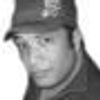
San Francisco is a tough town for live music because there's just so damn much of it.
Between the top-tier touring acts selling out huge venues and your best friend's cousin's band you've been guilted into seeing three times despite their being terrible, sorting through the chaos of the city's live music scene to find a happy middle ground is no easy task.
This column is an attempt to solve that problem for you. We're going to take it one week at a time.
Tue, 9/6 - The Mummies @ The Knockout
People writing about the San Francisco garage scene sometimes act like Ty Segall was the first dude in Northern California to have the idea of playing surf rock louder and trashier than everyone else.
Thing is, people in San Francisco have been playing garage rock since time immemorial. If old-timey gold rush prospectors had access to Fenders, the music they'd make would have been loud, fast and had a surf beat—this is a historical fact, look it up.
Take The Mummies, for example. Formed in San Mateo in 1988, the band took the Nuggets sound of early 60s garage and did it in their own raucous, booze-soaked way.
Naturally, that way involved dressing up like something that just crawled out of a sarcophagus.
Sure it's a gimmick, but it's a gimmick that works. Instead of just looking like they're about to yell "trick or treat," the effect is a more like a wall of undifferentiated, slightly-terrifying rock and roll energy shot directly from the stage right into your face.
Wed, 9/7 - Hanson @ The Regency Ballroom
Yes, that Hanson.
"MMMBop" Hanson.
I'm serious.
The eponymous trio of androgynous, Tulsa pre-teens who took the world of mid-1990s girldom by storm isn't just still around, they never really went away in the first place. While the band's fan base hit puberty and got really into N'Sync, Hanson kept putting out records that retained their preternatural pop smarts and gradually added layer after layer of songwriting complexity and killer classic rock chops.
The band now sounds a bit like a slick, upbeat, youthful version of Billy Joel—not exactly the place most people thought those kids would end up but, it's clearly better than the alternative of virtually every child rock star ever (with the exception of maybe Justin Timberlake).
This isn't to say that the band didn't have musical skills back in the days when they were playing to stadiums teeming with teenyboppers. Even though the band's drummer could barely see over his rack toms, Hanson had already made two full-length albums bay the time their breakout Middle of Nowhere was released.
Two of them.
In conclusion, Hanson was/is not a band that f*cked around. So pour your Haterade out at the door and buy tickets to Hanson. That's an order.
Thu, 9/8 - She Wants Revenge @ The Rickshaw Stop
There are two types of influential bands.
The first type is where most bands coming in their wake try to sound just like the original. Think: Nirvana.
The second type is where the other artists take a band's sound expend outward in concentric circles every conceivable direction. A perfect example of this is Joy Division. Everyone from local noisemakers Weekend to mannered NYC rockers Interpol have mined the British post-punk band's sound to varying degrees of success.
One of the most interesting bands to drink deeply from Ian Curtis's well is She Wants Revenge. Formed in the mid-2000s by two Los Angles-based DJs, She Wants Revenge takes the cutting guitars largely out of the equation in favor of moody, sparse synths and thereby foregrounding singer Justin Warfield's engagingly affected sing-speak.
Fri, 9/9 - Forrest Day @ The Independent
Here is everything you need to know about Forrest Day.
The end.
Sat, 9/10 - Mission Creek Music + Arts Festival @ McLaren Park
15 years ago local musician Jeff Ray had a dream.
Ray wanted to create a music festival that would fill what he called a "cultural void" that was making San Francisco considerably less awesome.
In the years since, his creation, the Mission Creek Music and Arts Festival, has grown from a one-night event to a week-long affair at a bevvy of clubs around the city.
But, as so often happens with voids, this one shifted. Other multi-day, multi-club festivals like Noise Pop and SF Pop Fest moved into the city, doing effectively the same thing as Mission Creek—so this year the festival's organizers decided to shake things up a bit.
Instead of giving San Francisco another mini-South By Southwest, this year's festival , while keeping much of its signature sprawling club dates, is also branching out into free, outdoor events for the first time ever. The biggest of those events is Saturday's free show at McLaren Park featuring Spindrift, Sam Flax & Higher Color, The She's and more.
